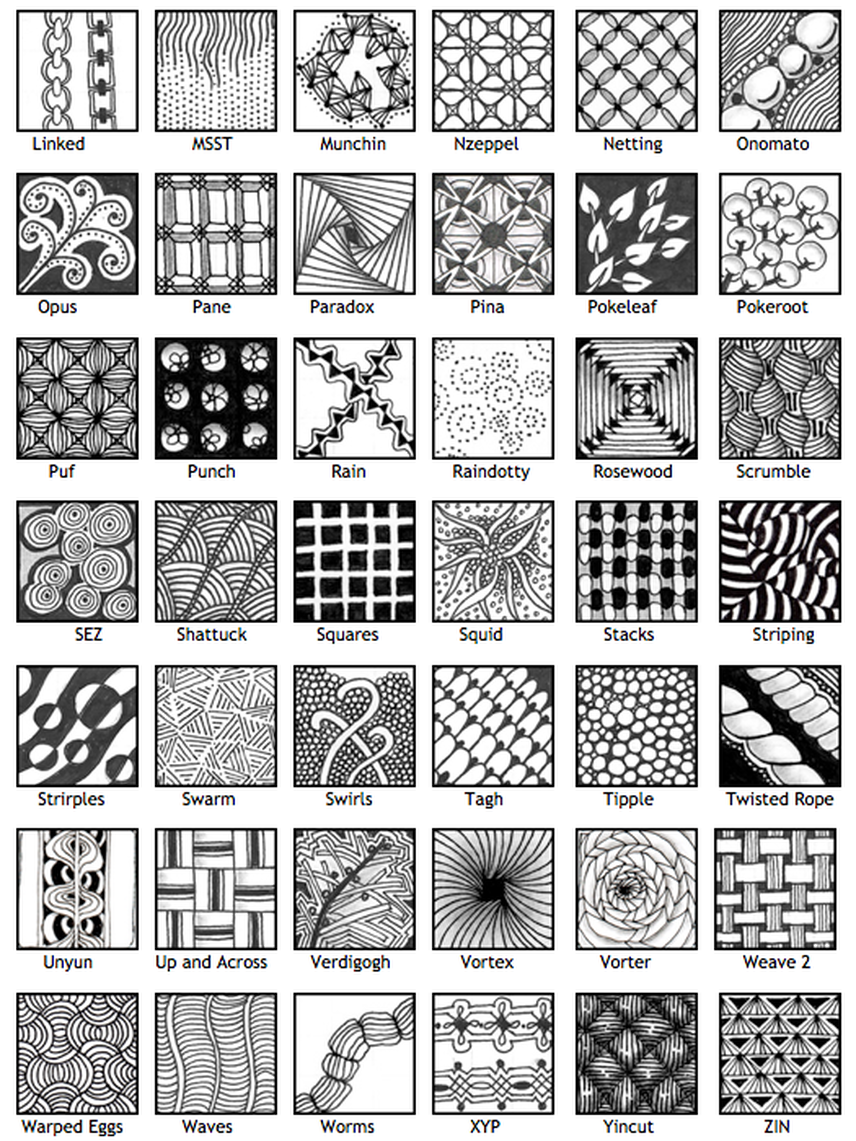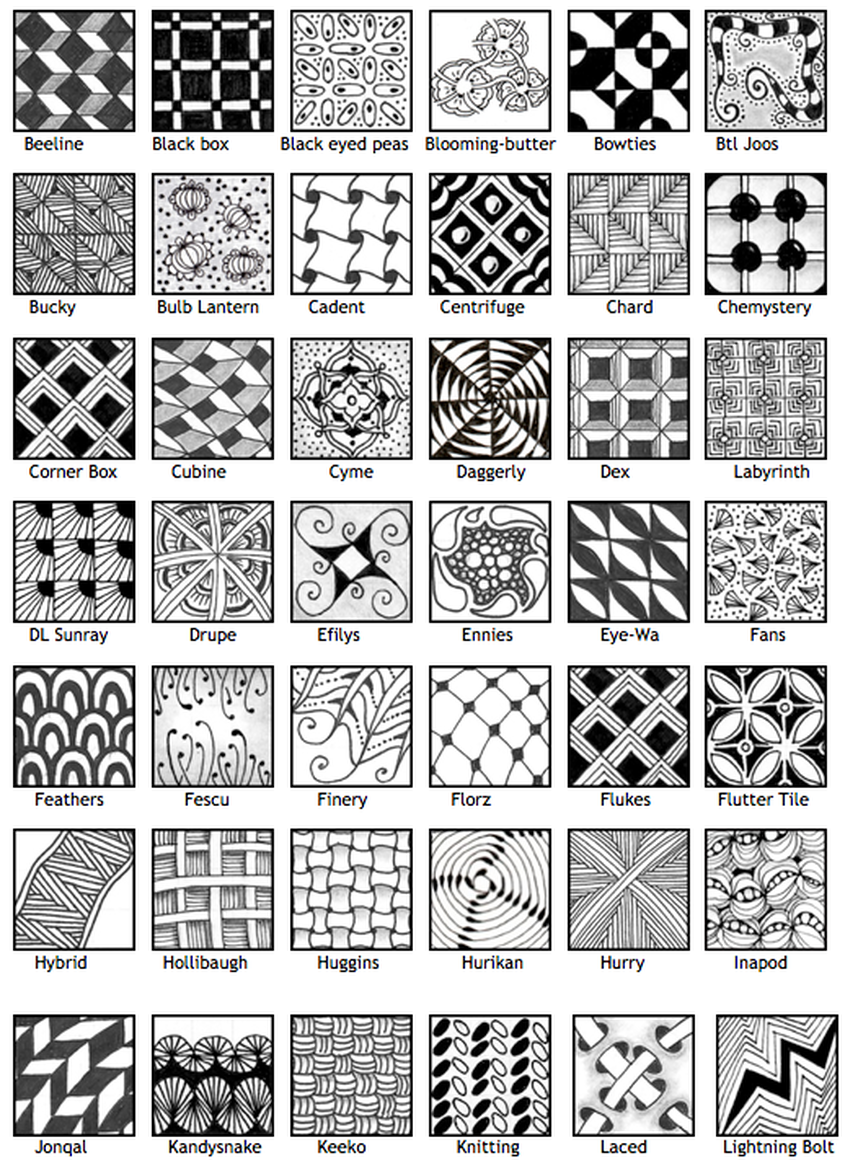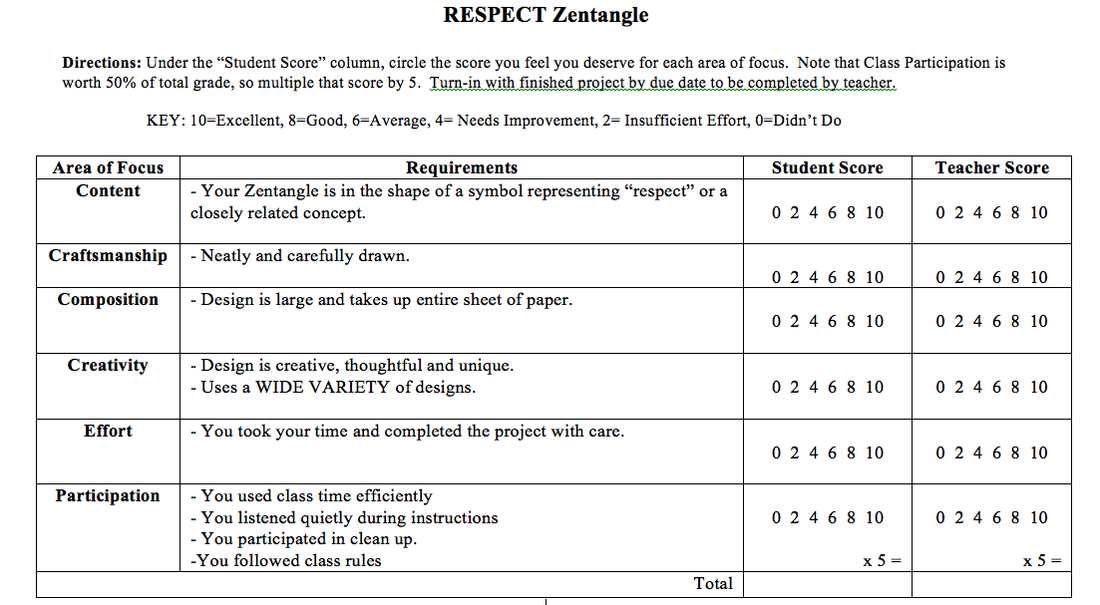objective: Students will create a zentangle drawing that symbolizes respect.
What are zentangles?
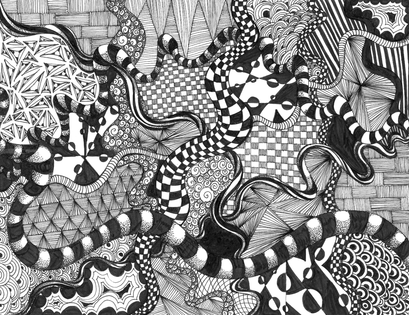
If you like to draw patterns or doodle, you can learn to "Zentangle." As the name implies, it's a Zen-like way of creating images through repetitive patterns and shapes.
"ZEN" refers to a set of beliefs tied to a type of Buddhism (Zen-Buddhism). Zen is really an attitude, or a way of going through life. Being "Zen" is being "at peace"- with yourself, with others, with everything- just the way that it is. Zentangles got their name from "Zen" because of the relaxing, meditative feeling you get when creating them, and the parallels that can be drawn between this way of drawing and the teachings of Zen.
With Zentangles, every mark you make is a deliberate mark- drawn deliberately and consciously. Similarly, we are always making "marks" in our lives- in the form of thoughts, words, deeds, etc. Zen teaches us to do everything consciously and deliberately- not absent-mindedly or without thinking.
With Zentangles, there are no erasers. Again this draws a parallel to real life- as there is no eraser in life. In Zentangle (and in life), you discover that even if you make what seems to be a mistake, you can then build on that event as a new pattern and go in unexpected and exciting new directions.
"ZEN" refers to a set of beliefs tied to a type of Buddhism (Zen-Buddhism). Zen is really an attitude, or a way of going through life. Being "Zen" is being "at peace"- with yourself, with others, with everything- just the way that it is. Zentangles got their name from "Zen" because of the relaxing, meditative feeling you get when creating them, and the parallels that can be drawn between this way of drawing and the teachings of Zen.
With Zentangles, every mark you make is a deliberate mark- drawn deliberately and consciously. Similarly, we are always making "marks" in our lives- in the form of thoughts, words, deeds, etc. Zen teaches us to do everything consciously and deliberately- not absent-mindedly or without thinking.
With Zentangles, there are no erasers. Again this draws a parallel to real life- as there is no eraser in life. In Zentangle (and in life), you discover that even if you make what seems to be a mistake, you can then build on that event as a new pattern and go in unexpected and exciting new directions.
week of respect
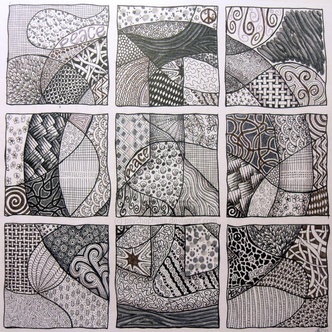
How do "Zentangles" relate to the "Week of Respect"?
Respect means accepting others as they are and treating them the way that you would like to be treated. Respect is related to compassion, empathy, peace, love, kindness and unity.
In "Zen" these are all supremely important virtues. We mentioned earlier that to be "Zen" means to be "at peace"- with yourself and with others. Being at peace with others means respecting them for who they are, being kind to them even if they are different, and treating them with compassion.
We also mentioned that creating a Zentangle is all about creating "deliberate marks" and learning from your mistakes (no erasers). During the week of respect, we aim to deliberately and consciously treat others with respect and learn from our mistakes if we haven't always been respectful in the past.
Respect means accepting others as they are and treating them the way that you would like to be treated. Respect is related to compassion, empathy, peace, love, kindness and unity.
In "Zen" these are all supremely important virtues. We mentioned earlier that to be "Zen" means to be "at peace"- with yourself and with others. Being at peace with others means respecting them for who they are, being kind to them even if they are different, and treating them with compassion.
We also mentioned that creating a Zentangle is all about creating "deliberate marks" and learning from your mistakes (no erasers). During the week of respect, we aim to deliberately and consciously treat others with respect and learn from our mistakes if we haven't always been respectful in the past.
Your assignment: create a zentangle that spreads the word of respect.
brainstorm:
Write down the following words in your sketchbook. (List any other related words that come to mind as well!)
Choose a symbol that you like best to use for your final design.
- respect
- peace
- compassion
- kindess
- unity
- love
- empathy
Choose a symbol that you like best to use for your final design.
Create your zentangle:
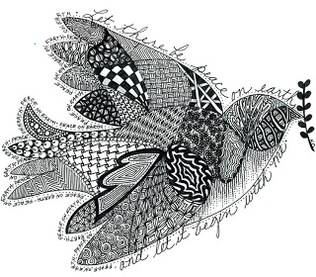
1.) Draw the outline of your symbol on your paper very large- so that it takes up most space.
2.) Draw "strings" through the inside of your symbol or around the outside of your symbol. (Strings are wavy, flowing lines that will divide your paper up into smaller sections. You will eventually fill each one of these sections up with a different pattern.)
3.) Using Sharpie Marker, select one shape to start with. Fill it completely with a pattern. Your pattern should be detailed and intricate as well as neat. Remember to make each line slowly, carefully, consciously and deliberately.
4.) Continue filling each shape with a different pattern.
2.) Draw "strings" through the inside of your symbol or around the outside of your symbol. (Strings are wavy, flowing lines that will divide your paper up into smaller sections. You will eventually fill each one of these sections up with a different pattern.)
3.) Using Sharpie Marker, select one shape to start with. Fill it completely with a pattern. Your pattern should be detailed and intricate as well as neat. Remember to make each line slowly, carefully, consciously and deliberately.
4.) Continue filling each shape with a different pattern.
zentangle patterns:
Need inspiration? Try using some of these patterns as part of your Zentangle. Or if you rather, come up with your own!

